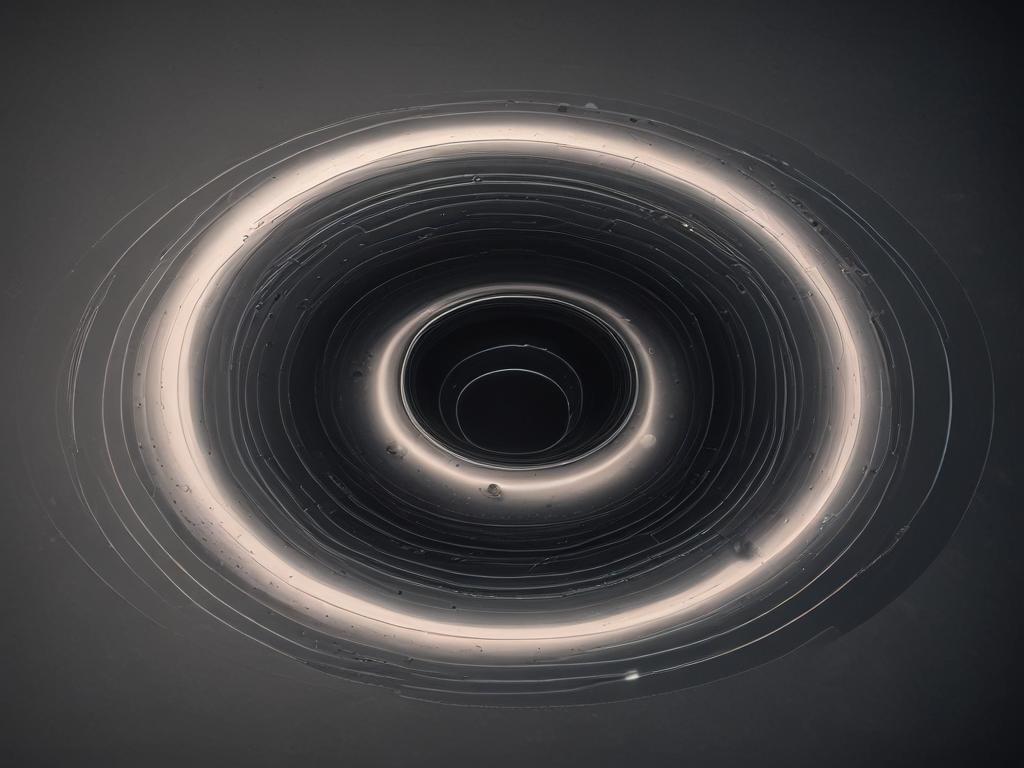
In the ever-evolving realm of astrophysics, the concept of black holes captivates the imagination and challenges our traditional understanding of the universe. Recently, researchers have begun to explore the revolutionary idea of black holes as quantum-geometric structures. This innovative perspective not only reshapes our interpretation of these enigmatic cosmic entities but also unlocks new pathways for unraveling the mysteries of space, time, and gravity. As we delve deeper into the quantum properties of black holes, we can appreciate the intricate dance of particles and spacetime that unfolds within their event horizons.
The implications of viewing black holes through a quantum lens are profound, suggesting a paradigm shift in how we perceive the fabric of the cosmos. By embracing the idea of quantum black holes, scientists are beginning to bridge the gap between gravity and quantum mechanics, paving the way for a unified theory of physics. This blog post invites you to join us on a journey through this fascinating intersection of theories, where we will explore the foundational concepts of quantum-geometric black holes, their revolutionary implications, and how this fresh perspective allows us to gain deeper insights into the universe we inhabit.
Understanding black holes: A quantum-geometric perspective
Black holes have long fascinated scientists and the public alike, primarily because of their mysterious nature and the extreme conditions they represent in the universe. Traditionally conceived as gravitational phenomena rooted in classical physics, recent advancements in theoretical physics invite us to view black holes through a quantum-geometric lens. This perspective suggests that black holes are not merely massive regions of space from which nothing can escape, but complex structures interwoven with quantum properties that challenge our conventional understanding of space and time.
Embracing a quantum-geometric perspective fundamentally shifts our comprehension of black holes. Instead of viewing them as endpoints of collapsing stars, we can think of them as intricate entities characterized by quantum states and geometrical configurations. In this view, the concept of spacetime becomes fluid; it combines the principles of quantum mechanics and general relativity. This revolutionary approach opens up new avenues for scientific inquiry, allowing researchers to explore questions such as the behavior of matter at the event horizon and the information paradox that challenges our understanding of entropy and information retention in black holes. By diving into this innovative perspective, we begin to unravel the complexities of the universe and the role black holes play within it.
The revolutionary implications of quantum structures in black hole theories
The integration of quantum mechanics with general relativity compels a rethinking of black holes as more than just cosmic vacuum cleaners. Researchers now propose that black holes might actually represent complex quantum-geometric structures, challenging traditional views of these astronomical giants. This new perspective suggests that the event horizon is not merely a boundary beyond which nothing escapes, but rather a dynamic interface shaped by the entanglement of quantum information. Such a shift in understanding illuminates the potential for a new physics that unifies gravity with quantum phenomena, transforming our comprehension of fundamental forces and the fabric of spacetime itself.
The implications of viewing black holes through a quantum lens extend beyond theoretical physics; they provoke profound questions about the nature of reality. For instance, if black holes store quantum information, this could lead to new insights into the long-standing information paradox. Scientists speculate that information might not be lost in black holes as previously thought but instead could be preserved in subtle correlations with the surrounding environment. Furthermore, understanding black holes as quantum-geometric structures might pave the way for breakthroughs in quantum computing and pave a path toward a more comprehensive theory of quantum gravity. By delving into these revolutionary concepts, we not only push the boundaries of knowledge but also refine our understanding of the universe at both macro and micro scales.
Exploring the universe through the lens of quantum black holes
Quantum black holes challenge our traditional understanding of the cosmos and open new avenues for exploration. By reimagining these celestial phenomena as quantum-geometric structures, scientists can delve into the fundamental nature of spacetime. This perspective suggests that black holes are not merely endpoints of gravitational collapse, but rather dynamic entities rich in information. With advancements in quantum physics, researchers are beginning to uncover the intricate connections between black holes and the fabric of the universe, further illuminating the mysteries surrounding dark matter and dark energy.
As we continue to explore the universe through the lens of quantum black holes, we also grapple with the implications for our understanding of time and reality. The interplay between quantum mechanics and general relativity is at the forefront of theoretical physics, and black holes serve as a crucible for testing these ideas. By focusing on quantum properties, such as entanglement and superposition, we can redefine the events that occur near and within these cosmic giants. This fresh perspective not only enhances our comprehension of black holes but also provides a better understanding of the universe's origins and ultimate fate, paving the way for revolutionary discoveries in astrophysics.